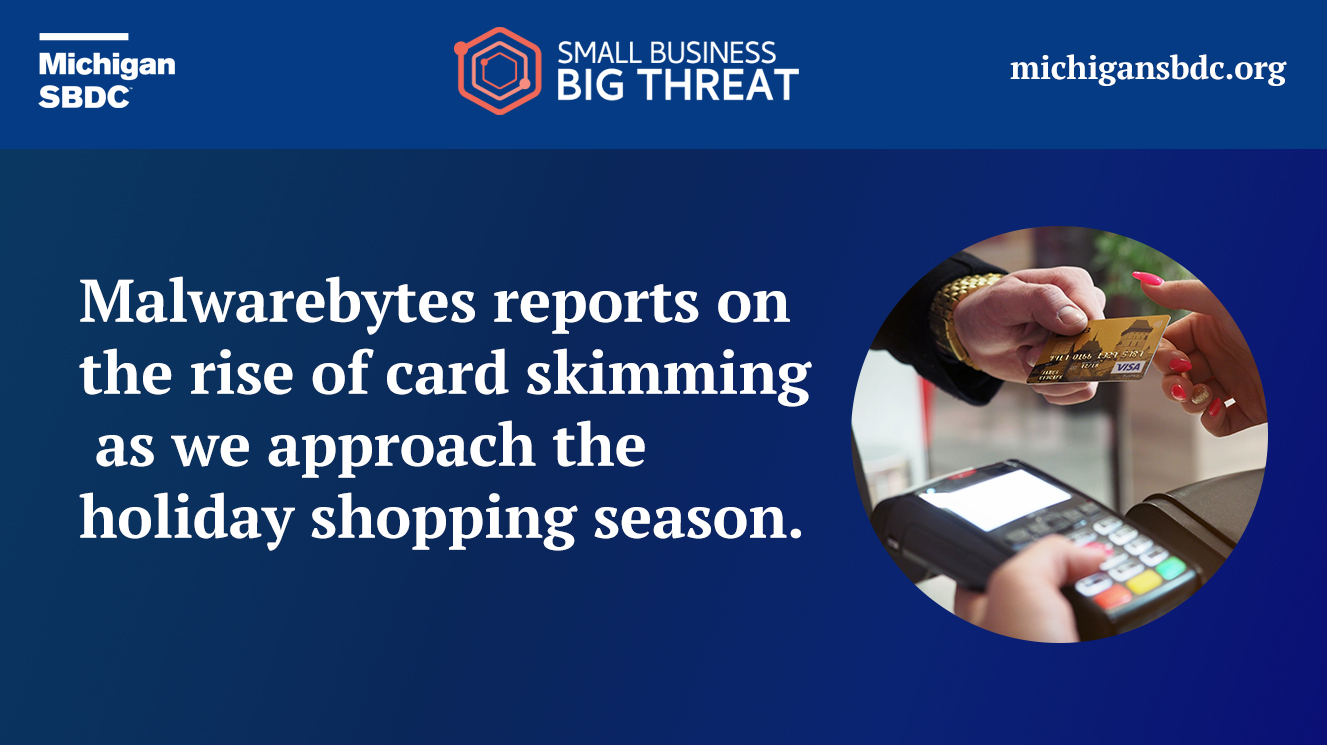 With card skimming season right around the corner, wait, holiday shopping season right around the corner, let’s talk card skimmers. Malwarebytes reports on the rise of card skimming as we approach the holiday shopping season. So let’s talk about what Malwarebytes found and learn more about card skimming.
With card skimming season right around the corner, wait, holiday shopping season right around the corner, let’s talk card skimmers. Malwarebytes reports on the rise of card skimming as we approach the holiday shopping season. So let’s talk about what Malwarebytes found and learn more about card skimming.
What is card skimming
Card skimming is really two different things. The typical skimming scheme is on a physical credit card device. The other scheme is malicious code applied to a website. With the holiday shopping season fast approaching we really need to be on the lookout for both of these threats.
As a small business owner you will want to regularly check your credit card devices to ensure no one has applied any physical attachments to your devices. Most of these card skimmers fit seamlessly right on top, so you will want to touch and be a little forceful with your own devices. This will help ensure you are collecting all payments and that none of your customers are having their credit or debit card information stolen.
If you offer online purchasing through your website, it is important to secure your site for the same reasons you secure in store purchases.
Here are just a few of the steps you can take to better secure your business website:
- Verify the platform you are using has the latest updates. All plug-ins should come from trusted sources that use the latest updates
- Ensure all admin and user accounts for your website are complex and long
- Use anti-malware on your website to scan for vulnerabilities
- Implement third party solutions that directly address botnet attacks, remote code execution, and other cyber-attacks
For more information on protecting your website, check out this article by IEEE Computer Society.
So as we speed towards the upcoming holidays, let’s protect our small businesses from the dreaded card skimming season!
To learn more on other cybersecurity threats, trends, and topics with a focus on small business, check out Small Business, Big Threat!